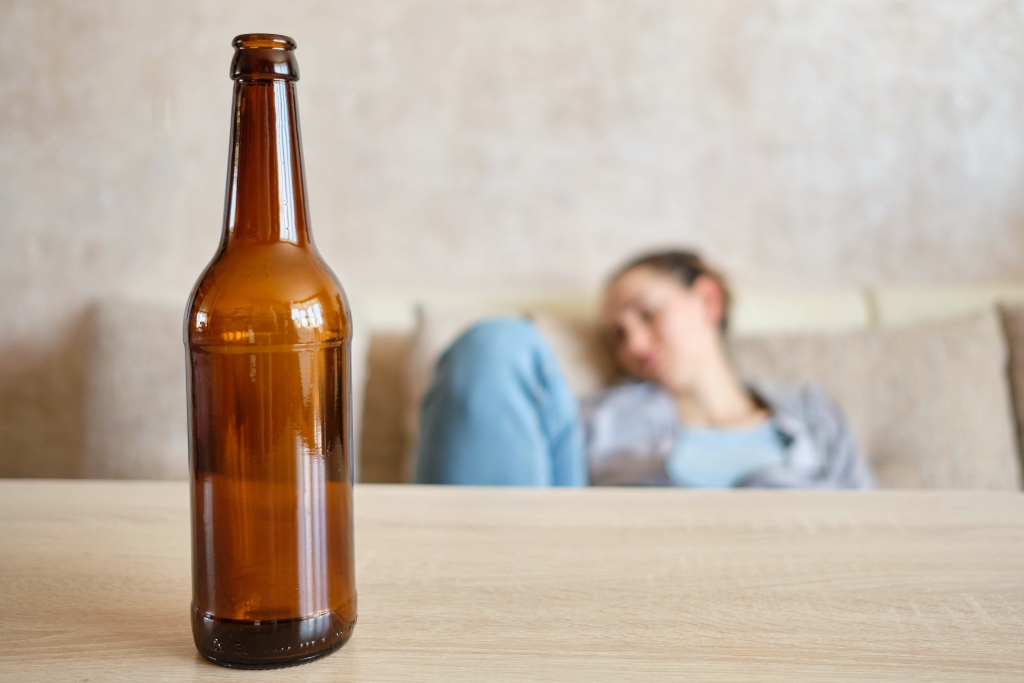Content
Because you know a lot of us we stole a lot, we hurt a lot of people through our actions. So when we give back it shows the community that we’re not like that now. …she likes to bake a lot so she brought me like cake, right and she’s like ‘hi, I’m so and so. I live next door and I just came down here to support you and tell you that I’m so proud of you and I like what you guys are doing here and keep doing the right thing’ and I was like “who are you?
- Such individuals often end up as ‘fake it to make it’ individuals who try to get by with the bare minimum of effort.
- Sober living houses are alcohol and drug-free environments where residents can establish or maintain their sobriety.
- Some sober-living homes have a base rate with additional costs for added services.
- Sober living homes and halfway houses are both types of residential environments designed to support those in recovery from addiction.
As such, they emphasize learning about addiction through personal recovery experience and drawing on one’s own recovery as a way to help others. Despite the advantages of halfway houses, there are limitations as well (Polcin & Henderson, https://goodmenproject.com/everyday-life-2/top-5-tips-to-consider-when-choosing-a-sober-house-for-living/ 2008). After some period of time, usually several months, residents are required to move out whether or not they feel ready for independent living. A second issue is financing the houses, which often includes government funding.
Top-Rated Structured Los Angeles Sober Living
Design for Recovery is committed to including family members in the recovery process. Staff members work with residents and families to repair relationships and foster productive communication. Design for Recovery’s staff members possess years of experience in addiction recovery. With trained staff members on-site 24/7, residents can be assured that their living quarters are safe and that they will always have access to necessary resources. Join our newsletter to be part of a community of people with shared experiences.
Over 24 agencies affiliated with CAARR offer clean and sober living services. It often acts as a bridge between rehabilitation and preparing members to live independently – drug- and alcohol-free. While residents aren’t required to have completed a rehab program before entry, many of them have.
SOBER LIVING VS A HALFWAY HOUSE
CSTL is slightly more structured than some SLHs because the houses are divided into six phase I and ten phase II houses. Phase I houses are adjacent to each other and operate as one unit, which includes shared dining and meeting spaces. These houses are located on a frontage road next to a busy commercial street (i.e., not imbedded within a larger residential area). The close proximity provides residents a sense of community that facilitates their commitment to the program. Although much less restrictive than residential treatment programs, there is some degree of external control and structure. Phase I residents have a curfew, must sign in and out when they leave and must have five 12-step meetings per week signed by the meeting chairperson.
- In any of these circumstances, their drug addiction is extremely isolating.
- They tended to want the program to have more control over resident behavior and find solutions to the high density of houses and corresponding problems such as limited parking.
- Halfway houses usually require that residents complete a formal rehab treatment program and they limit the amount of time residents can stay to 12 months.
- The two types of recovery houses assessed in this study showed different strengths and weaknesses and served different types of individuals.
- This allows individuals in recovery to feel like they are easing back into normal life and can start going back to their daily tasks and responsibilities.
Being surrounded by peers with the same struggles and goals is helpful in the recovery process. These formed relationships with other residents are indeed one of the keys to maintaining long-term abstinence and sobriety. Recovering from addiction has always been a challenging and isolating process. It doesn’t end with just completing detoxification or rehabilitation treatment.
How Does Sober Living Work?
This was particularly evident when respondents considered the consequences of ignoring alcohol and drug problems or alternative approaches to dealing with them, such as criminal justice incarceration. How often are residents asked to leave because they cannot pay rent and fees? How do you think management of the houses affects residents’ experiences and outcomes? Are there specific local government policies that impact SLHs, such as housing, zoning or health policies?

However, there is no limit to how long an individual can remain in sober living, provided they continue to follow all the rules. Sober homes are great for individuals that want to live in a supportive, drug-free community. Residents aren’t required to have completed rehab to join most sober homes, but there are other requirements for all residents.
Sober living homes provide safety and accountability for men and women to rebuild their lives through recovery. While other considerations can factor into their decision, these guidelines can serve as a starting point when searching for a sober living house. Just like an addiction treatment program, a sober living facility should meet the needs of the loved one someone is wanting to help.
- The length of time depends on an individual’s unique journey and how long their treatment and recovery take.
- Some SLHs offer intensive outpatient services, including on-site medical care.
- That is why, at any drug treatment center you consider, community should be the focus.
- Our structured sober living homes located in Southern California have quickly developed a reputation for providing hope to men still struggling with substance abuse, mental health and impulse control disorders.
- Many of the alumni at Turnbridge continue to stay in touch after their graduation day.
Describe some of the resistance, if any, that was encountered when this house first opened. Jason and colleagues (2005) studied neighbor perceptions of Oxford Houses and found very favorable views. However, they did not study other key stakeholders in the community, such as local government officials and criminal justice staff. They also did not aim to understand the impact of regulatory policies on the houses or what various stakeholders felt would improve relationships.
Sober living houses can foster peer encouragement, camaraderie, character development, and accountability in residents. The outcomes of living in such an environment can include positive health, behavioral, and relationship changes. Alcoholics Anonymous (AA) originated sober house in the 1930s and provided the steppingstones for sober housing by requiring strict sobriety, participation in the community, peer support, and a 12-step program. However, AA did little to address housing needs for its participants as they worked through the program.

It is intended to be a transitional residence for patients completing their addiction treatment program. Importantly, residents were able to maintain improvements even after they left the SLHs. By 18 months nearly all had left, yet improvements were for the most part maintained.
Outpatient programs, such as Partial Hospitalization Programs (PHP) or Intensive Outpatient Programs (IOP), still provide participants with ongoing therapy and, in some cases, medical care. However, recovering addicts in outpatient programs do not live at those treatment facilities and may return home at the end of each day’s scheduled sessions. Many of the alumni at Turnbridge continue to stay in touch after their graduation day.
How to be socially sober?
- Be Confident in Your Sobriety.
- Bring a Buddy.
- Be the Designated Driver.
- Tell a White Lie.
- Always Keep a Beverage in Your Hand.
- Change the Subject.
- Make an Effort to Mingle.
- Know When to Leave.
